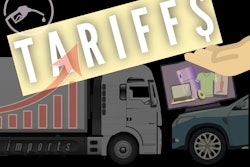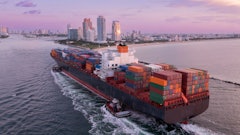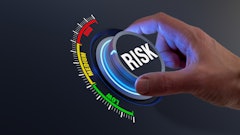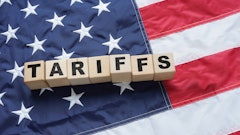
It began as an ordinary supply chain issue. A missing shipment of essential components halted production at a European manufacturer renowned for its cutting-edge technology.
Initially, the delay was seen as a logistical hiccup, easily solved by sourcing replacements. However, as the procurement team traced the disruption back to its source, a darker story emerged. A sub-tier supplier deep in the network had been implicated in forced labor practices. Workers in distant factories were paid meager wages, endured unsafe working conditions, had their passports impounded, and were held against their will.
The discovery sent shockwaves through the company. Beyond the immediate operational disruption, the reputational stakes were immense. If the story were to break, then investors would demand answers. Regulators would be watching. Customers, increasingly attuned to ethical considerations, would expect accountability.
The manufacturer was at a crossroads: Treat the incident as a one-off compliance issue or embrace the challenge as a wake-up call and an opportunity to reimagine its supply chain.
Don’t let a good supply chain crisis go to waste
This isn’t an isolated event. Many global companies are being confronted with this choice head-on as a result of the EU's Corporate Sustainability Due Diligence Directive (CSDDD). For these organizations, CSDDD offers both a mandate and a blueprint.
Designed to address human rights abuses, environmental harm, and governance failures across global supply chains, the directive compels businesses to dig deeper into their supplier ecosystem to identify and mitigate risks in their direct supplier base and potentially their extended supply chain networks.
Once hidden, sub-tier risks are making their way to the surface
The risks lurking in sub-tier supply chains are neither new nor isolated. Human trafficking, adversarial influence, environmental degradation, and unethical practices often reside far beyond the immediate view of first-tier suppliers. While many organizations are adept at managing risks from their direct suppliers, the complexity and opacity of global networks create blind spots further down the chain.
Although the recent Omnibus proposes refining the instances where companies are required to review their sub-tiers, CSDDD, as currently authored, forces companies to confront these hidden layers. Unlike traditional approaches that focus on top-tier suppliers, the directive mandates accountability throughout the entire value chain. This includes identifying and addressing issues that may arise several tiers removed from the organization itself. While this level of scrutiny presents operational and logistical challenges, it also offers unprecedented insights into the intricacies of supply chains.
Take, for example, the issue of forced labor. It’s easy to assume such practices are relics of the past, yet recent investigations reveal they persist, often embedded within supply networks that rely on outsourcing to low-cost regions. Sub-tier suppliers, operating under fewer regulatory constraints and with limited oversight, are often where such practices are hidden. In order for companies to ensure their operations are ethically sound, they must move beyond surface-level assessments and implement systems that trace risks to their source.
Turning compliance into a strategic advantage
Supply chain visibility that spans multiple tiers, when managed effectively, has the potential to deliver far-reaching benefits that go beyond risk mitigation. Companies that embrace this opportunity can transform their supply chains into strategic assets, capable of driving innovation, efficiency, and competitive differentiation.
The most immediate benefit of sub-tier visibility is the ability to identify and address risks before they escalate. It means proactively identifying vulnerable suppliers, engaging with them to address root causes, and, when necessary, severing ties with non-compliant partners. Such actions not only mitigate reputational risks but also send a clear message to the market about the company’s ethical priorities.
Visibility into sub-tier suppliers also enhances operational resilience. By understanding dependencies across all tiers, companies can anticipate potential disruptions and build greater flexibility into their supply chains. For example, in regions prone to geopolitical instability, sub-tier insights allow businesses to develop contingency plans and diversify sourcing strategies. This level of preparedness reduces vulnerability to external shocks and ensures continuity in the face of adversity.
Consumers and investors increasingly prioritize companies that demonstrate a commitment to ethical and sustainable practices. Sub-tier visibility enables organizations to showcase their ESG credentials with greater transparency and credibility. This not only enhances brand reputation but also creates new opportunities for growth, from attracting socially conscious consumers to securing investment from ESG-focused funds.
Blazing the trail for more sustainable supply chains
The EU's CSDDD represents a turning point for global supply chain management. The most forward-thinking organizations won’t see this directive as another regulatory checklist; rather, they’ll treat it as a pathway to resilience, innovation, and market leadership.
By adopting a proactive approach to sub-tier visibility and investing in technology tools that reveal a new degree of transparency, businesses can not only mitigate risks but also unlock new sources of value. This is the future of supply chain management: ethical, transparent, and strategically aligned with the demands of a rapidly evolving world.

















![Pros To Know 2026 [color]](https://img.sdcexec.com/mindful/acbm/workspaces/default/uploads/2025/08/prostoknow-2026-color.mduFvhpgMk.png?ar=16%3A9&auto=format%2Ccompress&bg=fff&fill-color=fff&fit=fill&h=135&q=70&w=240)